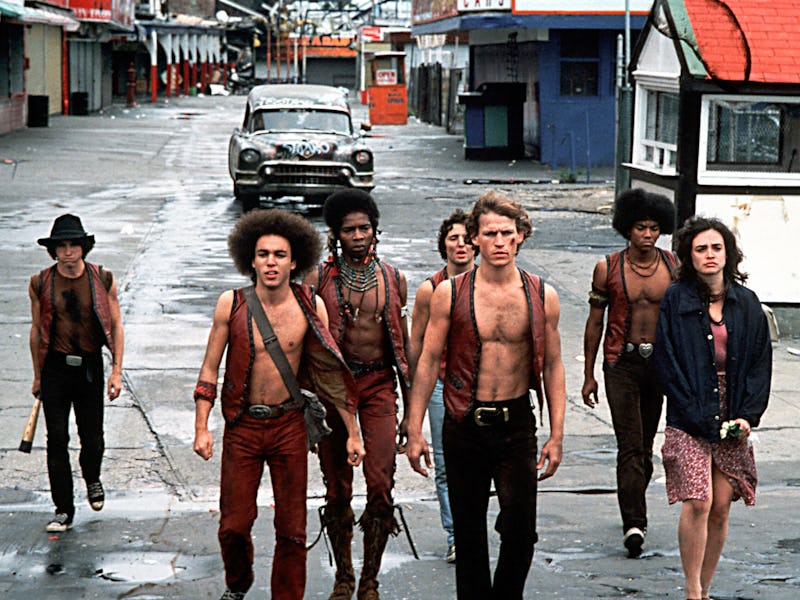One of the Most Influential Movies of the ‘70s is Secretly an Apocalyptic Story
What do you do when the world is collapsing around you?

The post-apocalyptic subgenre is riddled with famous tropes: marauding gangs, societal collapse, institutional decay, struggles for survival, and almost mythic quests to find a place of safety. In the right hands, some of this well-trod ground can still bring new life to the genre. Just look at The Last of Us.
Forty-five years ago, one movie put a truly unique twist on these tropes. Coming months before Mad Max, it told the tale of a gang hurrying through the streets of a decaying city amid crisis and collapse. They just wanted safety, but that safety was miles away through enemy territory. And they had a target on their back. But while The Warriors has all the hallmarks of a post-apocalyptic movie, director George Hill’s cult classic took place in near-future New York City.
The Warriors arrived in the Bronx at the urging of Cyrus, a gang leader with an offer for the city’s largest outfits. They’ve always fought each other, but by uniting, they could outnumber the cops and make the city theirs. It would bring in an era of gangland peace. But an assassin’s bullet shatters that peace, and the Warriors are assigned the blame. Now they must make the 30-mile trek back to Coney Island while every gang in the city is out to get them.
The Warriors feels both post-apocalyptic and mythic. The gangs all have odd, often colorful uniforms: take the Baseball Furies, who dress like a baseball team from Hell, complete with creepy face paint. Most post-apocalyptic stories already feel a bit mythical, with hushed stories of great collapses used to anchor the world their heroes live in, but Hill leans into it. The film is based on a 1965 novel by Sol Yurick, itself based on Xenophon’s Anabasis, about a group of mercenaries trapped behind enemy lines trying to make it home to safety. In the hands of Hill, who wanted to imbue the movie with a flavor of modern mythology, it gives the one night in the life of the Warriors the feeling of an epic saga.
It’s a long way home.
Hill also intentionally gave The Warriors the look and feel of a world that had ended. In late 1970s New York, it wasn’t hard to feel that it had. The city was on the verge of bankruptcy. Unrest and poverty were high. Crime, often bourne of poverty, had spiked, making it an easy motif in film and TV. The city was even plagued with fires, many born from insurance fraud.
So Hill didn’t have to exaggerate much to make it seem like the world was collapsing around the Warriors. Maybe it was. There’s an existential angst here, as the Warriors reflect on what they’re even fighting for. While more affluent parts of society could survive and thrive, the Warriors only had each other and some space under the boardwalk. There’s a soul to The Warriors that makes it more than a violent exploitation movie, despite plenty of dustups.
This gives the film an unusual potency in the post-apocalyptic canon. Often, a post-apocalyptic movie goes long on how the world collapsed and what it became afterward. In The Warriors, not much exposition is needed. It’s all right before our eyes, barely removed from the present. It just has a better wardrobe department.
This side of New York City wasn’t highlighted in the tourist brochures.
The film’s brutality and lukewarm critical reception hampered it at the box office, but it would go on to amass a significant cult following. Its influence can be seen in movies as wide-spanning as Pulp Fiction, Do the Right Thing, The Raid, and John Wick Chapter 4, to say nothing of the legion of clones that emerged in the ‘80s or the lines of dialogue sampled by acts like the Wu-Tang Clan and Notorious B.I.G. And you’ve likely heard someone imitate Luther’s famously creepy line, “Warriors, come out to plaaaaay,” or at least seen one of its many parodies.
The exaggerated New York of The Warriors is unrecognizable today, but there’s always a collapse happening somewhere. In that, the movie’s potency hasn’t diminished. It will always ring true to viewers living at a time when it feels like the world around them is ending.
This article was originally published on